
About Andrew Cusack
 Writer, web designer, etc.; born in New York; educated in Argentina, Scotland, and South Africa; now based in London.
Writer, web designer, etc.; born in New York; educated in Argentina, Scotland, and South Africa; now based in London. read more
News
Blogs
Reviews & Periodicals
Arts & Design
World
France
Mitteleuropa
Knickerbockers
Argentina
The Levant
Africa
Cape of Good Hope
Netherlands
Scandinavia
Québec
India
Muscovy
Germany
Academica
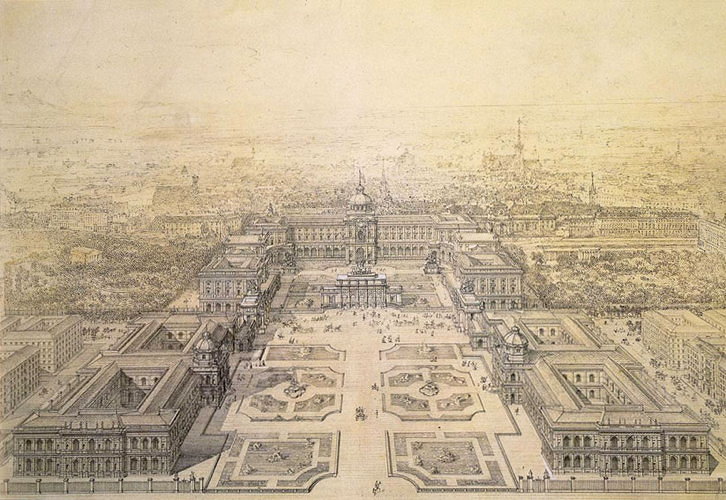
The Kaiserforum
The Unrealised Vision of an Imperial Forum for Vienna
SIDLING UP THE KOHLMARKT and entering the Hofburg through the Michaelerplatz is a glorious architectural experience, but viewing Vienna’s imperial palace from the Ringstraße end, one is left with a certain awkwardness. This is because what is now the Heldenplatz, open to the neighbouring Volksgarten, was conceived as part of a great imperial forum, the Kaiserforum, but the scheme has been left incomplete.
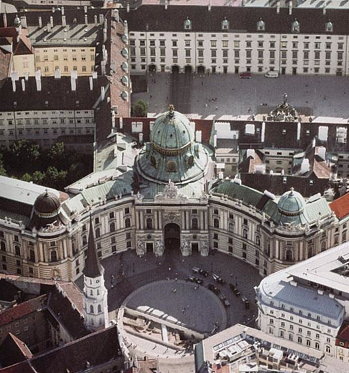
The original impetus for this forum was the plan to build the identical Kunsthistoriches Museum and Natural History Museum across from the Hofburg next to the former imperial stables. Emperor Franz Joseph held a closed competition for four invited architects — Carl Hasenauer, Theophil von Hansen, Heinrich Ferstel, and Moritz Löhr — to conceive of an overall scheme to expand the Hofburg in order to provide an architectural connection to the two new museums.
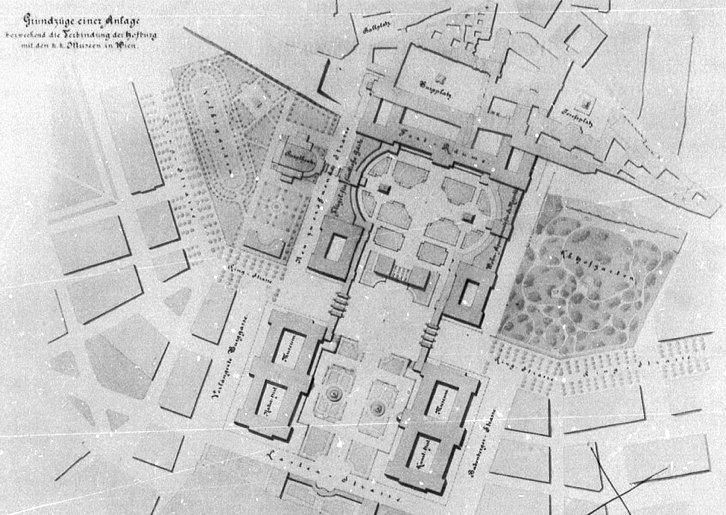
The Dresden architect Gottfried Semper was chosen to oversee and arbritrate the competition, but was dissatisfied with the four plans the chosen architects contrived. Instead, Semper conceived his own plan for a grand imperial forum flanked by two great wings reaching out towards the two museums. Grand archways would span the Ringstraße creating a physical connection between the buildings and continuing the visual unity of the project. A new Festsaal and throne room would look out onto the new Kaiserforum.
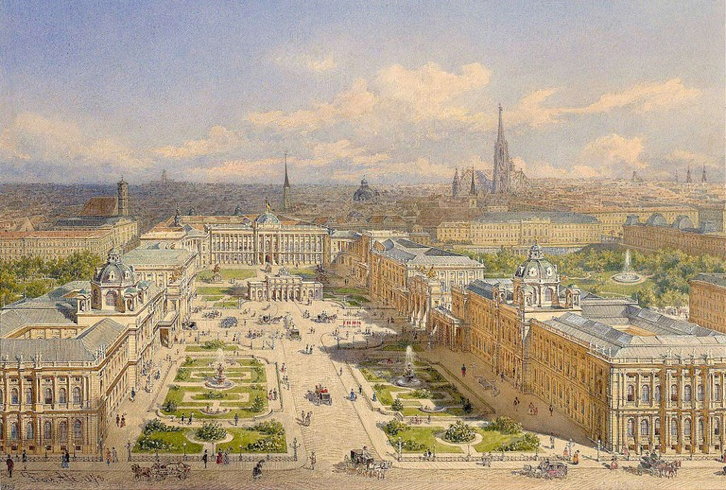
The twin museums were built across the Ringstraße according to designs by Carl Hasenauer, finished in 1891, and construction began on the southern wing of the two flanking arms of the expanded palace. Franz-Joseph, however, lost interest in the project after the assassination of the Empress Elisabeth. While the southern wing, now known as the Neue Berg, was completed on the exterior in 1913, work on its northern complement was never started. No one quite knew what to do with the Neue Berg anyhow, as it was not built for any function but for mere aesthetic purposes. (It now houses the Ephesus Museum, the Museum of Ethnology, most of the Austrian National Library, the Arms & Armoury Collection, and the Musical Instrument Collection.)
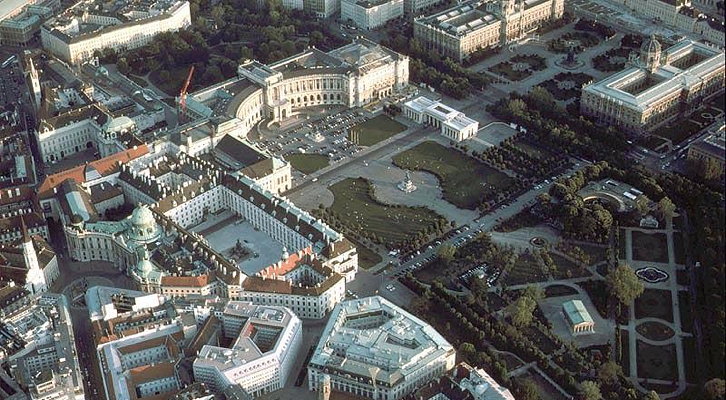
The Neue Burg is now the visual focus of the Heldenplatz, a role it was not at all designed for. The overall effect of the space today is rather poor. I had thought perhaps they should build the northern wing as an exact copy of the southern one. It could be used to house the European Parliament (given its location and history Vienna is a much more logical capital for Europe than Brussels). Or it could be home for some of the numerous United Nations entities based in the city (along with Geneva, Nairobi, and the New York headquarters, Vienna is one of the four major homes of the United Nations).
Manfred Matzka, a top-ranking civil servant in the Austrian Chancellery, suggested it be built to house the proposed Museum of the History of the Austrian Republic. The finally completed space would then form a Forum der Republik rather than Kaiserforum, a suggestion which attracted praise and derision.
The much greater likelihood is that nothing will be done, and the present aesthetic dissatisfaction will remain. It’s not ugly, after all, merely incomplete.
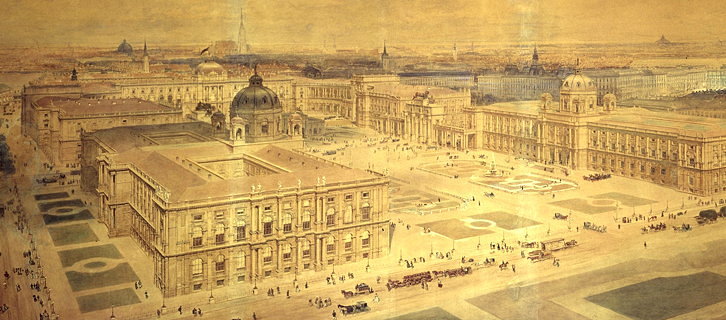
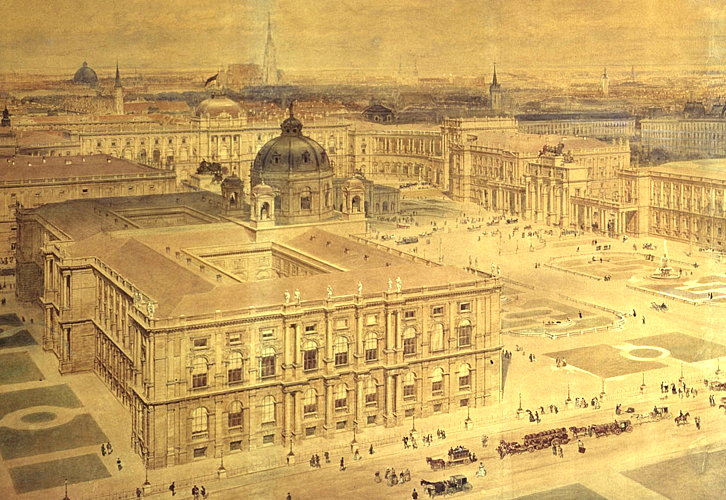
Search
Instagram: @andcusack
Click here for my Instagram photos.Most Recent Posts
- Patrick in Parliament March 18, 2024
- Articles of Note: 13 March 2024 March 13, 2024
- Cambridge March 9, 2024
- Taken on Trust March 4, 2024
- Immanuel on the Green March 2, 2024
Most Recent Comments
Book Wishlist
Monthly Archives
Categories



“Vienna is one of the four major homes of the United Nations”?
I hadn’t realised that. No wonder I feel so out of sorts when I am there these days.
Bravo! A concise, informative and (as far as I know), accurate article. Great pictures you’ve dug up, too, as usual.
One of the great cities of the world. Interesting look inside it.
What an interesting article. And of course, Vienna would be a much more appripriate capital of the EU than Brussels. And the completion of this forum would give an important signal of rejuvination of Europe’s cultural identity.